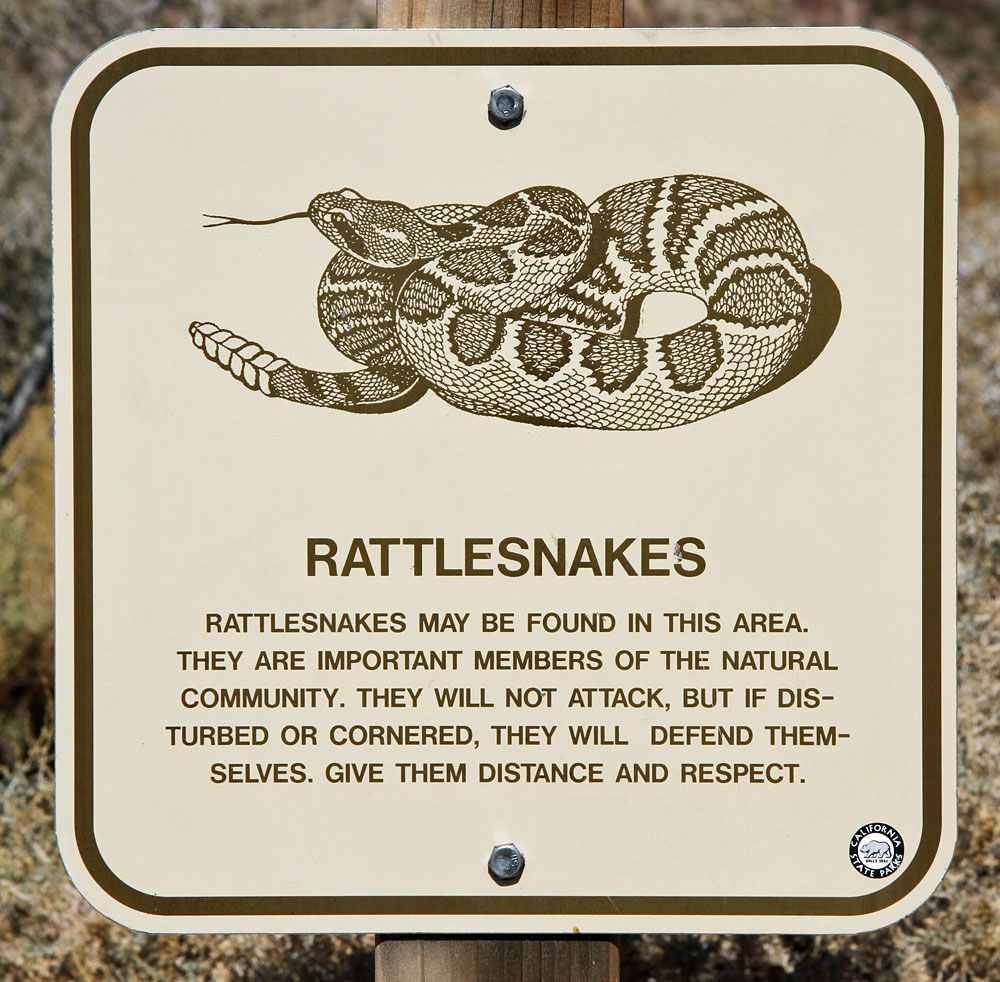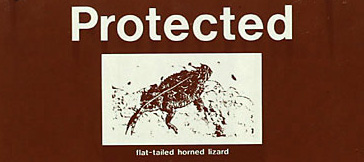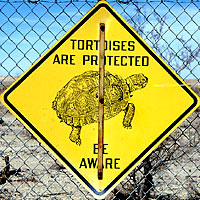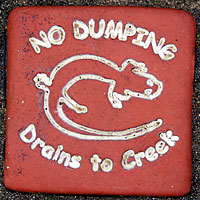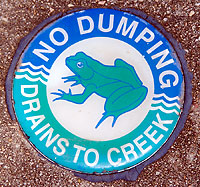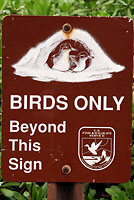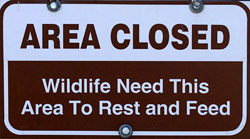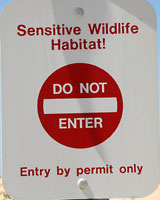
A Guide to the Amphibians
and Reptiles of California

Amphibian and Reptile Declines
and Conservation

Amphibian and Reptile Conservation |
| PARC: Partners in Amphibian and Reptile Conservation. "To conserve amphibians, reptiles and their habitats as integral parts of our ecosystem and culture through proactive and coordinated public/private partnerships." |
| USGS Nonindigenous Species |
| International Reptile Conservation Foundation |
| Desert Tortoise Preserve Committee |
| California Turtle and Tortoise Club |
| Horned Lizard Conservation Society |
| The Center For Snake Conservation |
| Advocates for Snake Preservation |
Amphibian Decline and Conservation |
| Amphibiaweb: Worldwide Amphibian Declines: How big is the problem, what are the causes, and what can be done? |
| Global Amphibian Assessment - A comprehensive status assessment of the world's amphibian species, with a searchable database. |
| USGS Amphibian Research and Monitoring Initiative |
| Amphibian Specialist Group |
| Save The Frogs! |
| The Disappearance of Frogs: Why We Should Be Very Worried |
| Frog Deformities and Malformations |

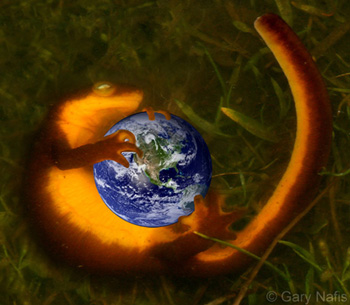 |
This web site exists to share and encourage an appreciation for our native reptiles and amphibians without dwelling too much on the problems they face, but it is impossible to ignore that many experts believe we are in an era of mass extinctions, known as the Sixth Extinction, because five mass other mass extinctions are known to science. But unlike the previous extinctions, this one is being caused by humans as a result of habitat destruction, habitat fragmentation, overkilling, the spread of invasive species and diseases, and global climate change, and that the future existence of many herps, especially amphibians, as well as all life on Earth, is seriously threatened. To the left are links to a few of the many places online where you can learn about amphibian and reptile declines and conservation. The words below provide insights into our relationship with the natural world and the modern biodiversity dilemma, especially as it applies to reptiles and amphibians. They include some of my favorite passages from writings about natural history. A list of many of the works quoted here is included at the bottom of the page. |
| "In the end, we will conserve only what we love, we will love only what we understand, and we will understand only what we are taught." Baba Dioum, Sengalese environmentalist, 1968 |
| "Conserving venomous serpents inevitably depends on controlling their negative impact on us and vice versa, as is true for more popular organisms like elephants and big cats. Nevertheless, [Baba] Dioum's testimonial about saving what we love and loving what we understand emphasizes how research and education are linch pins for appreciating less widely liked creatures. We can indeed all be teachers, in classrooms or over backyard fences. So if you agree with me that the Earth is wilder with dangerous animals, in ways that repay tolerance, tell your friends something good about rattlesnakes. And remember, information that helps us understand, love, and conserve nature follows from someone carefully attending to her particulars - someone like my high school mentor, the father of snake ecology [Henry Fitch]." Harry W. Greene. Tracks and Shadows - Field Biology As Art. University of California Press, 2013. |
| "A thing is right when it tends to preserve the integrity, stability, and beauty of the biotic community. It is wrong when it tends otherwise." Aldo Leopold. A Sand County Almanac. Oxford University Press, 1949. |
| "How, exactly, are we connected to the earth, the more-than-human world, in our lives and in our actions? And in light of this connection, how are we to carry out our lives on a changing earth? These are the questions we are called to answer in this kairos, this graced moment of opportune crisis. I have come to believe that opening ourselves to such inquiry and participating daily in the process of discovery it implies is our most urgent work as humans in the new millennium. And not because engaging these questions will make us happier, or smarter, or make more of our moments feel enchanted, though it will certainly do all of these things. It is urgent because an intimate awareness of the continuity between our lives and the rest of life is the only thing that will truly conserve the earth - this wonderful earth that we rightly love." Lyanda Lynn Haupt. Crow Planet - Essential Wisdom From the Urban Wilderness. Little, Brown and Company, 2009. |
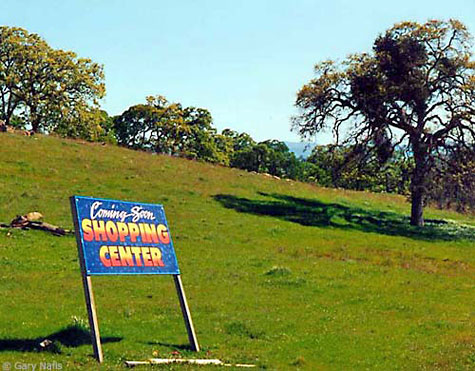 |
| "Attrition of remaining natural areas, those largely unaltered by human activities, is occurring at an accelerated pace in most parts of the world. ... Population increases with attendant spread of urbanization and extension of the agricultural base, along with other uses of the land, have already widely obscured or greatly changed original conditions. In many places we are too late, and in others we must work rapidly to determine the kinds of naturally occurring plants and animals, their interrelations, and their importance to man. The significance of such work should not be underestimated. The interdependence of living things is far-reaching, and the function of many of the separate life forms in the complex balance of nature is not well understood. No one can say what consequences may follow elimination of a species or what is the potential value to man of any organism until it has been thoroughly studied. Our interest thus extends beyond that of having available natural areas for recreation and an outdoor laboratory to satisfy purely academic phases of the interests of naturalists." Robert C. Stebbins. Amphibians and Reptiles of Western North America, 1954. |
 |
| "And I brought ye into a plentiful country, to eat the fruit thereof and the goodness thereof; but when ye entered, ye defiled my land, and made mine heritage an abomination." The Bible: Jeremiah 2:7. |
 |
| "The natural landscape is being held hostage, being sold out, to human politics, economics, and fancy, exacerbated by the crushing pressure of overpopulation." David M. Carroll. Swampwalker's Journal - A Wetlands Year. Houghton Mifflin Company, 1999. |
| "Some unwonted, taught pride diverts us from our original intent, which is to explore the neighborhood, view the landscape, to discover at least where it is that we have been so startlingly set down, if we can't learn why." Annie Dillard. Pilgrim at Tinker Creek. Harper & Row, Publishers. 1974. |
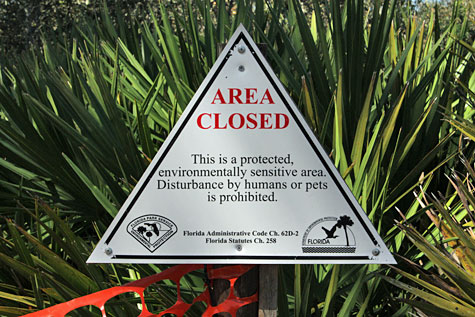 |
| "Without the achievement of a stable global population and the implementation of social justice, it simply will not be possible to learn about, manage, preserve, and benefit from what is left of the world's biodiversity. Understanding the connections between biodiversity, human institutions, and our long-term survival is the first step in learning to manage the biological resources of the planet Earth, our common home, for our mutual benefit.
" Peter H. Raven. Forward - Life on the Edge. A Guide to California's Endangered Natural Resources: Wildlife. BioSystem Books 1994. |
| "…disease, shrinking habitat, and road mortality in many migratory species have made such spectacles [viewing spring breeding migrations] increasingly rare. Habitat destruction tops the list of threats and includes the effects of clear-cutting, stream channeling, pond filling, wetland drainage, agriculture, and pollutants. Because their semi-permeable skins, moisture requirements, and typically biphasic life cycles make amphibians indicators of local environmental health and climatic trends, their current worldwide decline…bodes poorly for a global environment on which we also depend. Because amphibians are adapted to certain temperature and moisture regimens for breeding, larval development, and adulthood, climatic flux at any juncture can affect both populations and overall distribution. Global warming will favor a few species but be detrimental to most. In northeastern North America, for instance, increasingly frequent midwinter mild spells have prompted premature breeding by some species, whose efforts are then destroyed by freezing when weather returns to seasonal norms. At the other extreme, exceptionally hot spring days cause water temperatures in breeding habitats to skyrocket, accelerating fungal, algal, and bacterial growth with accompanying rapid depletion of dissolved oxygen, an effect that can kill eggs or cause developmental abnormalities. Problems are exacerbated when shade vegetation that moderates water temperature is cut from the margins of aquatic habitat. Human activities and fragmented habitats can drive local amphibian extinctions, but what happens during naturally occurring climatic shifts? Results are ultimately the same - changing distributions of species adapted to particular ecological or climatic associations. The difference is that these occur gradually over vast periods of time as part of a larger integrated system of changes in continuous habitat - like those following retreat of the last continental ice sheet." Leslie Anthony. Snakebit: Confessions of a Herpetologist. Greystone Books, 2008. |
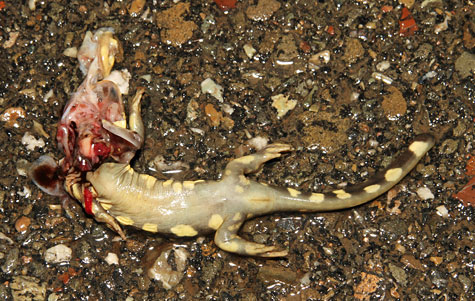 An endangered California Tiger Salamander that was run on a road at night over before it could get to the breeding pond. Fragmentation of habitat by roads can contribute to the extinction of entire populations of migratory salamanders. |
| "Our economy demands that we maximize human use of the land. In particular, the heavy dependence on new housing starts and the automobile, with their attendant road building, consumes the natural environment. These factors are compounded by cultural, economic, and legal traditions that one has the right to do whatever one pleases with one's land. We appear to believe that this right is incontrovertible, even God-given, however large or small the parcel, however it came into our hands, whatever impact that use may have on the natural landscape. Overshadowing these impacts are the pressures of devastating increases in global population. Against these overwhelming forces, the remaining vernal pool salamanders advance at each winter's end with evolutionary confidence and guidance. They will move to their pools even when the migration has become a death march." David M. Carroll. Swampwalker's Journal - A Wetlands Year. Houghton Mifflin Company, 1999. |
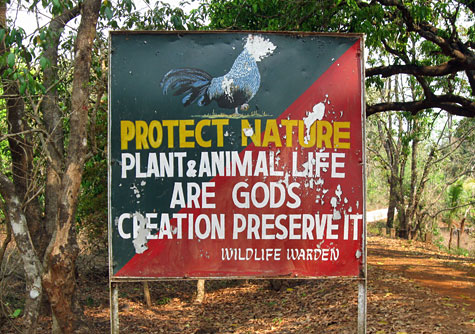 |
| "As is the case with so many kinds of animals, reptiles and amphibians are under great pressure, and they are rapidly disappearing from many areas where formerly they were abundant. The senseless slaughter that still continues, the massive destruction of habitats resulting from the activities of humankind, and the exploitation of these animals for the pet trade all take a heavy toll." Roger Conant and Joseph Collins. A Field Guide to Reptiles and Amphibians, Eastern and Central North America. Houghton Mifflin Company, 1998. |
| "The loss of a single snake, or a dozen snakes, or even a hundred in one year will probably not seriously impact the balance of a particular ecosystem, at least not in the long term. Most natural changes occur slowly, over prolonged periods, like the rhythm of the seasons or the process of aging, so that their effects are usually not immediately apparent. But it is clear that over time the cumulative consequences of snake bashing, coupled with habitat destruction and environmental pollution, have taken a heavy toll on most native serpents...." James R. Dixon and John E. Werler. Texas Snakes, A Field Guide. University of Texas Press, 2005 |
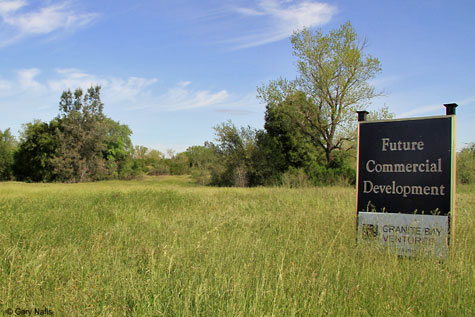 |
| "An environmental catastrophe of global proportions is fast upon us, not just looming on some distant horizon. More than six billion people will burden the earth by the year 2000, and the irrevocable loss of many plant and animal species is under way now; new species of vertebrates are literally going extinct before their formal descriptions have been published. Simply stated, unlimited reproduction, technology, and greed have caused this biodiversity crisis, although a more detailed assessment would include complex social, political, and economic forces; only urgent, difficult measures will bring this tragic process under control We must rapidly increase our understanding of nature and preserve chunks of landscape with as much as possible of what remains. We must drastically reduce pollution and other environmentally unsound by-products of technology, for which those of us in the large, excessively developed and consumptive countries are most responsible. We must eliminate overexploitation and special persecution of wild populations, increasingly serious problems for serpents; we need to better understand the ecology of highly altered environments, as these increasingly will provide most of the available wildlife habitat (somebody should study urban rattlesnakes.). All possible compassion for people cannot erase one final, overarching reality - that ever more of us are depleting increasingly scarce resources and further reducing the quality of life; we must control human population growth." Harry W. Greene. Snakes -The Evolution of Mystery in Nature. University of California Press, 1997. |
| "At a time when habitats and species are under greater pressure than they have ever seen, humans need to have a soft footprint in order to maintain the environment in its healthiest form. While encouraging direct contact and viewing of lizards and their habitats, we also ask you to consider your actions and impacts with responsible ethics. After all, our children and future generations deserve to see these lizards and lizard habitats as well. ... Lizards are uniquely adapted species, and when placed in aquariums, terrariums, and jars, they are not in an ideal habitat. Returning a captive animal back into the wild can be even worse. First, a lizard will likely perish because of its unfamiliarity with an area, or by being chased out into unfamiliar territory by the new resident. Second, if it does survive, it may transmit devastating diseases to native populations.... And third, if the lizard is not released to exactly the same spot, there can be genetic mixing and the loss of unique genotypes that have evolved for tens of thousands of years or more. A seemingly thoughtful action of giving an animal its freedom can in turn be devastating to natural populations. People should understand that lizards do the most good for the environment when they are left in the place where they are an integral part of their ecosystem." Lawrence Jones and Rob Lovich, editors. Lizards of the American Southwest: A Photographic Field Guide. Rio Nuevo Publishers, 2009. |
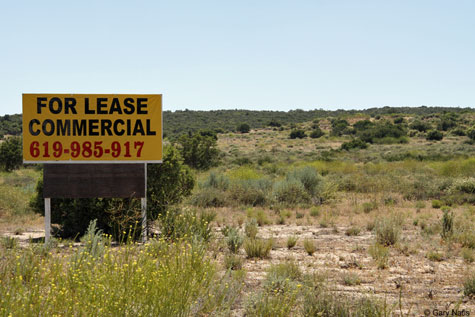 |
| "Although potential loss of lizard species associated with drastic habitat modification would be relatively easy to document, this is rarely done. Paradoxically, current regulations in most countries (including the United States) require that scientists seeking to document diversity obtain permits to collect lizards. Yet very few countries require developers to obtain permits for the many (and usually unknown) lizards that will die as the result of building projects." ... "Overpopulation, a growing lack of care for the natural world, the threats of habitat change and ecotoxicants - all these have a tremendous impact on our planet's biota, including hundreds of lizard species." ... "Success of [lizard] breeding programs for the pet trade has been phenomenal, resulting not only in high profits for breeders and dealers but also in increased awareness of and interest in lizards on a global scale. The downside of this industry is that it provides an avenue for illegal trade and exploitation under the guise of legal trade. There is nothing to keep wild-caught animals from being added to stocks and sold as captive bred. However...such trade is likely to be replaced in the long term by captive-bred supplies. Another serious downside is introduction of unnatural genetic strains. Captive breeders have discovered, just as domestic animal breeders did long ago, that deviants can be sold for more than normal animals.... this low-tech genetic engineering has the potential of impacting natural populations negatively should these animals reenter natural systems." Eric R. Pianca and Laurie J. Vitt. Lizards: Windows to the Evolution of Diversity (Organisms and Environments, 5.) University of California Press, 2003. |
| "If turtles are to remain a conspicuous part of our fauna we must initiate additional conservation measures. Although we do not yet know enough about turtle biology to formulate an adequate conservation plan for many species, certain needs are obvious. The waterways and lands harboring important populations must be protected from undue human disturbance and pollution. The trend away from the use of the dangerous residual pesticides and other chemical pollutants must be continued. States must pass and enforce legislation controlling the capture of these creatures in the wild, and the pet trade must be strictly monitored. Equally important, more people must become acquainted with the many fascinating aspects of turtle biology. Such awareness should make people more interested in the protection of these shy creatures." Carl H. Ernst, Roger W. Barbour, and Jeffrey E. Lovich. Turtles of the United States and Canada. Smithsonian Institution Press, 1994. |
| "Salamanders and frogs are elements of a larger story involving a global decline in biodiversity associated with uncontrolled human population growth. The health of every major biome on Earth has deteriorated during the last two centuries in parallel with the rapid expansion of the human population. In particular, many North American amphibians have declined owing to environmental alteration from timber harvesting, agriculture, wetland drainage, urbanization, stream pollution and siltation, and the introduction of exotic predators.... ... Although long-term historical data are lacking, scientists agree that populations of most North American salamanders have declined markedly since European colonization. Environmental alteration from deforestation, habitat fragmentation, timber harvesting, agriculture, wetland drainage, urban growth, and stream pollution and siltation is the primary reason for salamander declines. ... Although North American frogs and salamanders have been adversely affected by environmental degradation by humans, much can be done to improve habitats and minimize future losses. Populations of many pond-breeding salamanders such as the mole salamanders (Ambystoma spp.) have been severely depleted because of the loss of small wetlands. Maintaining viable populations will require protecting vernal ponds, swamps, and other small wetlands used for breeding, as well as protecting surrounding forests that provide habitats for adult salamanders. Small vernal ponds can be easily constructed in forested landscapes, and a growing number of forest managers, wetlands ecologists, and conservation biologists are designing and implementing plans to create vernal pond habitats for amphibians." James W. Petranka. Salamanders of the United States and Canada. Smithsonian Institution Press, 1998. |
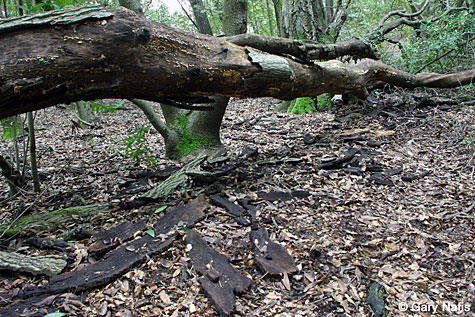 |
| A careful look underneath the fallen branches and bark of the dead tree shown above on a wet winter afternoon turned up 16 salamanders of 4 species - one Arboreal Salamander, two Coast Range Newts, one Yellow-eyed Ensatina, and 12 California Slender Salamanders, proving that wood debris on a forest floor is an important microhabitat for salamanders. Along with fallen debris, tree bark, tree cavities, root holes, and splits in trees are also useful habitat for many kinds of wildlife, including birds, mammals, amphibians and reptiles, but dead trees and their debris are often removed indiscriminately without consideration for wildlife. The Cavity Conservation Initiative is a group whose goal is to educate land managers and the public about the value of dead trees. |
 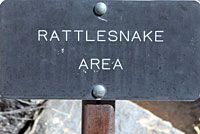  |
| "Can we appreciate animals as they are, even if dangerous to us and our livestock, or must we imbue them with human motivations, judge them by our goals and values?" ... "But then again, why should humans admire and conserve things that might hurt us? Are anthropocentrism (human-centered perspectives and values) and anthropomorphism (human characteristics attributed to other organisms) really so bad if the fate of the planet is in our hands and biological heritage underlies all life, including our own? And so what if - a real possibility - however much we yearn for wilderness, humanity no longer accommodates natural-born killers? … Clearly the burden of proof is on those of us who find such creatures worthy of tolerance, let alone love. In truth, we twenty-first-century humans are saddled with terrible dilemmas, willy-nilly shaping the future yet bereft of consensus over what to save, let alone how to do so. Amid shrinking resources, should we care more about pandas than crocodiles, especially if the latter eat us? How can we yearn for places untrammeled by humans yet also bemoan disconnectedness from nature - can we really connect without trammeling? In the face of shrinking habitats and climate change, with the inevitable extinction of many species-including perhaps most large, nondomestic animals-what are feasible conservation goals? Not only are concepts like wilderness debated, but it's as if over the last few million years, having gained awareness of our mortal fate, we've pulled away from the very things for which many of us profess such longing." Harry W. Greene. Tracks and Shadows - Field Biology As Art. University of California Press, 2013. |
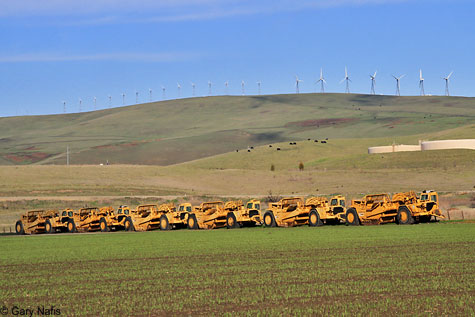 |
| "Now, however, all wild animals face a grave new threat - the destruction of their habitats by man as a result of the explosive growth of his population, mounting pollution, and the use of modern technology to modify the earth's environments. These forces pose serious problems for man himself and bring changes to which many species of plants and animals cannot adjust. ... This is why those who are concerned about the protection of wildlife feel so strongly that population growth and the exploitation of nature must be restrained and that man must broaden his moral code to include respect for all life, not just those species that are considered beneficial to him. Unless we change our ways the list of extinct and nearly extinct species will continue to grow. All who are about man's future and that of other organisms must work to solve the problem of population growth and its accompanying destructive effects." Robert C. Stebbins. California Amphibians and Reptiles. The University of California Press, 1972 |
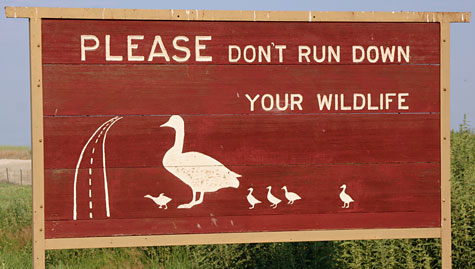 |
| "The greatness of a nation and its moral progress can be judged by the way its animals are treated." (This is often attributed to Mahatma Gandhi but since the source of the quotation is never identified it is most likely apocryphal - but true nevertheless.) |
| "Reptiles and amphibians are important to us in many ways. They play a part in the balance of nature; they are a storehouse of unexplored scientific information that can benefit us; they have contributed enormously to the advance of vertebrate physiology and embryology, and the enhance the outdoor experiences of a growing number of people who gain pleasure from observing them. Yet at a time of growing awareness of their value, their numbers are declining. The greatest destructive force is habitat disturbance. Most species of wild animals are adapted to a specific and complex set of conditions which must be met if they are to survive. Growth of the human population brings great and rapid changes. Marshes are drained, streams are placed in concrete troughs, canyons are dammed and inundated, the ground is cleared for subdivisions and highways, agriculture spreads into marginal lands and, spurred on by water developments, reaches out even into deserts, the stronghold of reptiles. Air, water, and soil are contaminated. Although a few species may be temporarily benefited by some of these changes, most are not and the list of creatures rendered extinct in historic times can be expected to grow. The trend is toward an ordered, domesticated world, reduced in organic variety and crowded with people and their possessions. Interest in wildlife preservation and the well-being of humanity cannot be separated from concern with efforts to limit human population growth and prevent careless exploitation of remaining natural areas." Robert C. Stebbins. A Field Guide to Western Reptiles and Amphibians, Second Edition. Houghton Mifflin Company,1985. |
| "Even with the best management approaches, amphibians will continue to decline and exhibit gross developmental malformations until we exhibit the social and political will to implement the lifestyle and policy changes necessary to ensure sustainable ecosystems. The consequences of staying the course are obvious, and extend far beyond what we are describing for amphibians. ... We do not live in two worlds - one that we can exploit for profit, another where we raise our children. As we think about conserving amphibians, keep in mind that by doing so, we may be saving ourselves." Michael Lannoo (Editor). Forward to: Amphibian Declines: The Conservation Status of United States Species. University of California Press, June 2005. |
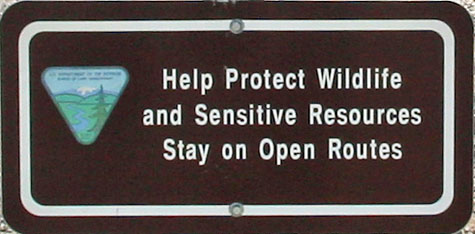 |
| "Amphibians are subject to many adverse pressures. Among these are habitat modifications (including fragmentation of woodlands and the filling of breeding ponds.), death on roadways as the creatures try to access breeding ponds or new habitats, collection for the pet trade, the use of herbicides, insecticides, and other pollutants in the environment, and what seems to be the newest documented pathogen, a species of chytrid fungus. ... Can diminishing amphibian populations be saved? Perhaps, but to reverse the lots of many of those most seriously imperiled will take Herculean research and dedication. First we must accurately identify amphibian species (some are impossible to differentiate in the field) and understand their entire life history processes and, consequently, where and when they might be most vulnerable. The causes of what are construed as adverse interactions between potential pathogens such as chytrid fungi and amphibians must be identified and their effects reversed. Habitats, and not just fragmented remnants of habitats, must be saved. Atmospheric deterioration must be faced head-on and corrected. Ensuring that these creatures remain for us and our descendants to view and appreciate in the wild will take a concerted effort on the part of all of us. Whether we are researchers or herpetoculturists, or merely have an interest in the creatures with which we share our world, it is time for us to join forces and promote the conservation of these interesting, beneficial, and highly specialized animals." R. D. Bartlett and Patricia P. Bartlett. Guide and Reference to the Amphibians of Western North America (North of Mexico) and Hawaii. University Press of Florida, 2009. |
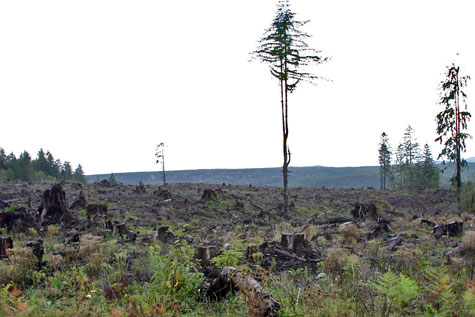 |
| "Clearly, the most important factor leading to amphibian population declines is habitat destruction. When forests are cleared it is no surprise that species that once lived there disappear. What is alarming is that there are many cases where the habitat is protected and amphibians are still disappearing. The causes for recent amphibian declines are many, but an emerging disease called chytridiomycosis and global climate change are thought the be the biggest threats to amphibians. Chytridiomycosis is a disease caused by the fungal chytrid pathogen Batrachochytrium dendrobatidis. This pathogen is associated with the global loss of hundreds of species of amphibians and represents a spectacular loss of biodiversity, some say the worst in recorded history." Amphibiaweb |
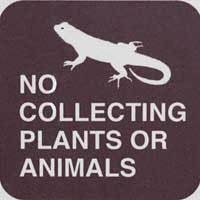 |
| "Besides the fact that over-collecting, destroying microhabitats, and smuggling reptiles across the border into the United States is considered an illegal act in both countries, it is environmentally and ethically unconscionable, and it constitutes an act of aggression against our ecosystems. So the next time you see a price list with protected species on it or attend a reptile expo where Baja California and Gulf of California herps are being paraded for sale in hundreds of little plastic boxes, remember that the original populations from which these specimens came were most likely illegally taken (Mellink 1995). Then ask yourself if you want to be a part of, or cater to, that level of our society that abuses wildlife for profit." L. Lee Grismer - Amphibians and Reptiles of Baja California. University of California Press, 2002. |
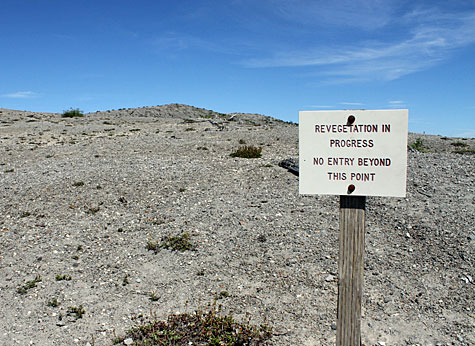 |
| "It is all but universally believed that if development rights are bought up and motorized vehicles excluded, if human presence is limited to foot traffic, dogs on leashes, mountain bikes, kayaks, and the like, a parcel of land is saved and its wildlife habitat protected. But in nearly every case, as will be true here, funding sources and the terms of easements mandate a level of access and recreational use that lays the foundation not for true habitat protection but for a playground for people, a human theme park. A constant refrain of my advocacy for moving beyond stewardship and conservation to preservation is that I do support setting aside places where people can go, from relatively natural areas to city parks. One frequently hears that there are not enough places for people to go. But where do we not go? We are too many and we tread too heavily. (Perhaps the planet is to blame for being too small.) What tiny percentage of Earth is irrevocably dedicated to providing wildlife sanctuary, to preserving the biodiversity on which, as more people are gradually coming to realize, the health of the planet and, ultimately, of the human condition utterly depends? We cannot seem to allow room for ecosystems to play out their destinies free from human intervention. A room of its own is biodiversity's only requirement." David M. Carroll. Following the Water - A Hydromancer's Notebook. Houghton Mifflin Harcourt, 2009. |
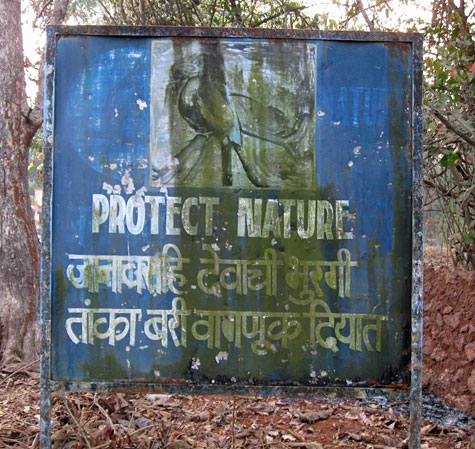 |
| "In the United States, and indeed around the world, humankind's dominion over the earth is resulting in the disappearance of the world's plant and animal species (extinction being the ultimate form of suppression). Scientists have termed this the "biodiversity crisis." The urgency of this crisis has not yet been perceived by the voting public, for various reasons. First, we have crisis overload. When everything today seems to be in crisis, who can become concerned over yet one more? Second, as already noted, our brains are lousy at perceiving incremental change. ... Unfortunately, the loss of biodiversity is not a past problem; it continues today. Therefore, it is not sufficient simply to record historic loss. The causes of these losses must also be identified, and where these processes persist, we should be prepared to reevaluate them with an educated eye toward change. Diminished biodiversity is perceived as one inevitable cost of a changing world driven by the notion of human progress. But is this tradeoff necessary? Must these two concepts - natural destruction and human progress - be inexorably linked, or can human progress occur without environmental degradation? Are we, as a people, even environmentally aware enough to make this distinction? In Okoboji the rights of two dozen contemplative perch fishers and two hundred peaceful lakefront homeowners appear to bear the same weight as the whims of a single testosterone-laden lunatic on a jet ski. Politicians often present us with a simple-minded choice: people or nature (jobs or owls, croplands or wetlands). As nature becomes more distant (deciding to play a compact disc of natural sounds in your house rather than just going outside to listen), it becomes all too easy to dismiss it. And we do not mind destruction if we do not know what we are destroying. ... Champions of grass-roots biodiversity must face the realization that in much of the United States, local plants and animals do not stir deep emotions; paddlefish, while having a certain appeal all their own, are not pandas. Nevertheless, I suggest that if you can care about pandas, you can care about paddlefish or amphibians or dragonflies or even clams. Local pride could encompass local natural history, even the most obscure and economically valueless (but, as we will see, not necessarily ecologically unimportant) species. We could even teach local natural history to our grade schoolers." Michael J. Lannoo. Okoboji Wetlands - A Lesson in Natural History. University of Iowa Press, 1996. |
 |
| "Recent studies investigating site-specific cases of amphibian declines have revealed that global changes may be involved. Regional warming, increases in ultraviolet radiation, and disease epidemics may all be driven by global phenomena. These global changes might be induced, at least in part, by the increasing intensity and extent of the human impact on climatic and ecological systems. While there will undoubtedly be variation in the type, rate, and degree of response that amphibian species make to global-scale alterations to the environment, it is clear that amphibian conservation can no longer be achieved without taking into account changes in the global system. A comprehensive strategy to maintain amphibian populations must include reducing the emissions of greenhouse and ozone depleting gases, as well as monitoring and managing their infectious diseases - even those amphibians granted well-enforced legal protection in refuges, sanctuaries, or parks are threatened by global-scale change." Jamie K.Reaser and Andrew Blausetin. Amphibian Declines: The Conservation Status of United States Species, Chapter Eleven: Repurcussions of Global Change. University of California Press, June 2005. Michael Lannoo, Editor. |
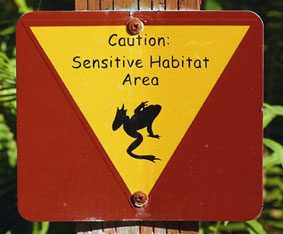 |
| "Frogs are nature's canary in the mine. The adults of most species are unusually sensitive to small changes in the environment because they live in the water, permanently or part-time, or in moist hideaways in forests. Their larvae - tadpoles - are aquatic bottom feeders. In both adult and larval stages the typical amphibian skin functions as a moist and porous apparatus for the exchange of air, making it an absorbent pad ideal for collecting poisons and parasites. We ourselves could not have devised a better early-warning device for general environmental deterioration than a frog." Edward O. Wilson. The Future of Life. Alfred A. Knopf, 2002. |
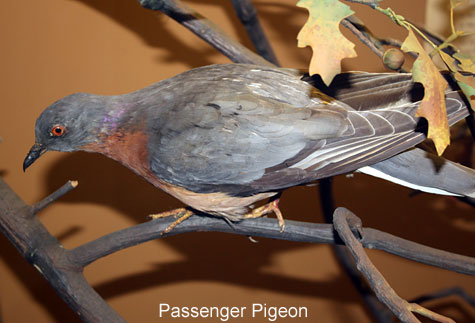 |
| "I believe that next to the loss of habitat, the over-collecting of herpetofauna and the release of diseased, hybrid, and non-native amphibians and reptiles are the main problems facing us today. Everyone involved - scientists, representatives of commercial concerns and regulators - must shoulder some responsibility. We have a simple choice: we can develop the social and political will to conserve amphibian populations, or we can watch numbers dwindle and species become extinct. Sustainable and wise commercial use of amphibians must be a component of the social change we seek to effect." Anthony B. Wilson. Amphibian Declines: The Conservation Status of United States Species, Chapter 22: Commercial Trade. University of California Press, June 2005. Michael Lannoo, Editor. |
| "One of the most important things an individual can do to help ensure that our frogs and toads are around for the future is support local land conservation. Although rapid population declines due to disease are affecting many amphibian species, loss of habitat still remains an important long-term threat. ... Preserving your local stream or wetland is one of the best things you can do for frogs and toads." Lang Elliot, Carl Gerhardt, and Carlos Davidson. Frogs and Toads of North America, a Comprehensive Guide to their Identification, Behavior, and Calls. Houghton Mifflin Harcourt, 2009. |
| "...most of what I write about in this book is already gone or going under fast. This is not a travel guide but an elegy. A memorial. You're holding a tombstone in your hands. A bloody rock. Don't drop it on your foot - throw it at something big and glassy. What do you have to lose?" Edward Abbey. Desert Solitaire. 1967 |
 |
| "Historically, observing amphibians has often been done by wantonly flipping over cover objects (such as rocks and logs) to expose these secretive animals. This causes damage to the sensitive microenvironment that has developed below the cover object over many years. Whenever surface objects must be lifted, they must be carefully replaced, and the denizens must not be crushed. Indeed, in many situations, it is not possible to turn over an object without damaging the microenvironment." Kelly R. McAllister and Lawrence L. C. Jones. Laws and Conservation chapter: Jones, Lawrence L. C., William P. Leonard, Deanna H. Olson, editors. Amphibians of the Northwest 2005. |
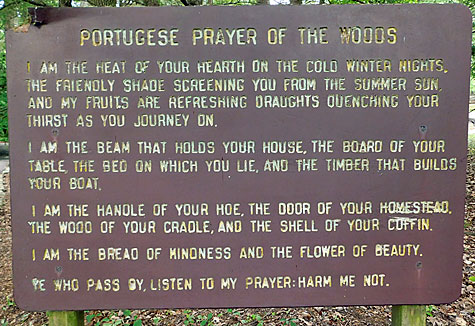 |
| "For all the rising awareness and increased sounding of environmental alarms, we do not, on the whole, truly grasp the enormity of global habitat loss and its consequences for nonhuman life and, in the end, for ourselves. Nor do we seem to recognize the role of individual human lives in the intensification of this loss. We are, as a species, environmental racists. I do not mean the issue of the "haves" visiting their castings, hazardous waste, and such upon the neighborhoods of the "have-nots." Rather I refer to the unchecked global population we so arrogantly allow ourselves and to the remorselessly human-centered tenor of global economics and politics. We use the words "environment" and "environmental protection" too exclusively in reference to human environments, human service: clean air for us to breathe, clean water for us to drink, swim in, stock and catch fish in. Mountains are there for us to climb and ski and hold our communication towers; their sheerest rock faces are for us to scale. Desert and wetlands exist to provide challenges and arenas for our equipment, technology, and all-terrain vehicles. Or they are all no more than agreeable backgrounds, something to look at out our windows, over cleared spaces that were once rich in habitats and species. In conservation debates, we cannot use the phrase "in perpetuity" without putting it in terms of our own future generations, our children's children's children. The depth of our anthropocentric behavior reveals explicitly the extent to which we think of ourselves as owning all living things, along with the very earth, air, and water in which they live, as if we possessed some divinely mandated dominion over all creation. As we will learn in time, none of this belongs to us. The one species that most affects the earth and all other species, having set itself apart from them, and evidently considering itself capable of living outside of the strictures governing all the others, must come to heed the voices that express the ecological ethic and aesthetic. It is these voices that speak to the inescapable awareness that the human being and human spirit do not exist outside of the coevolutionary design, the framework of the natural world." David M. Carroll, Swampwalker's Journal - A Wetlands Year. Houghton Mifflin Company, 1999. |
| "It is beyond ironic that we can all but never say no to the housing project, shopping mall, hotel, highway, golf course, or expansion of agriculture, but that after the habitat has been fragmented, funds, agencies, and groups can be drummed up to cage the final nests, relocate buckets of eggs, fast-forward hatchling turtles in aquariums, and dump them into encircled habitat remnants. The most direct, simple, and viable solution, to simply leave the place alone, has no place in the debate. It is rarely a matter of whether or not a project is to go forward but how it is to go forward, with various token, ecologically meaningless compromises and mitigations, together with management plans for the lost landscape. We look to feel good when we should feel ashamed. "Wildlife management" is a sorry contradiction in terms. There already is a management plan. It has been unfolding since life's appearance on earth." David M. Carroll. Swampwalker's Journal - A Wetlands Year. Houghton Mifflin Company, 1999. |
| "If you have men who will exclude any of God's creatures from the shelter of compassion and pity, you will have men who will deal likewise with their fellow men." St. Francis of Assisi |
 |
|
| "The race of humans who came here and supplanted the first of their kind to migrate here, who were not in essence landscape-takers, began a taking and disconnecting that has become and ever-expanding constant, a ceaseless marginalization and even eradication of ecologies in the ultimately impossible drive to satisfy human exigencies and desires, a drive exacerbated to the point of no return by overpopulation. The species that came to invent wealth created poverty, for its own kind as well as for the natural landscape. In wealth and poverty alike the human species now impoverishes the planet." David M. Carroll. Following the Water - A Hydromancer's Notebook. Houghton Mifflin Harcourt, 2009. |
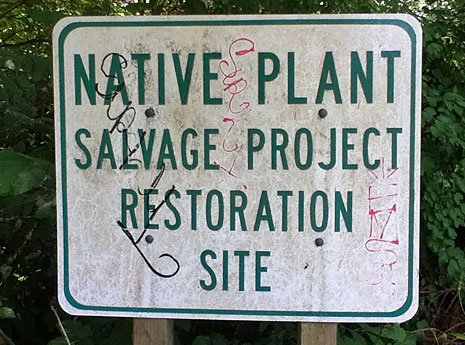 |
| "Protecting a wetland to its water's edge, or even to its broadest wetland plant and soil boundaries, clearly does not begin to address the habitat needs of spotted and Blanding's turtles, or of many other wetland species. It is necessary to protect buffer zones, migration corridors, and contiguous habitats." ... "Trenching a length of several yards at the lowest lip of this seasonal pond would be enough to end its history as a wetland, a history that goes back to the landscape shapings of the last glaciers. Some earnest hours with a shovel or pickaxe, or a few minutes with a backhoe, would end an ecology that has been thousands of years in the making. Dig a narrow ditch, and water would no longer collect here. It would steadily slip away and disperse among the lowland alders, down-gradient to the south. The seasons of salamanders, frogs, and turtles would end immediately." David M. Carroll. Swampwalker's Journal - A Wetlands Year. Houghton Mifflin Company, 1999. |
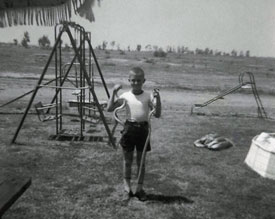 |
| "To this day, the sighting of a spotted turtle, particularly the first of the season, carries an aura of my first encounter with one. ... My bonding with that wild animal in her wild place was immediate and deep. That wetland no longer exists, but I have followed the species to new places the rest of my life. Because of that turtle, year after year, day after day, I enter the wetlands and move among their other animals and their plants, getting to know them in a way I otherwise never would have. The first spotted turtle was the Rosetta Stone for a language I had never even known existed before, a language that cannot be spoken. The turtle became my translator of and guide into an ultimately unknowable world, the embodiment of an ineffable realm I seek to know, in the sense of being there without needing to fully understand it. I have come to realize in later life that the turtle was my liberator, as well, from an exclusive bondage to the human world, from a form of political imprisonment and a denial of spiritual and intellectual freedom that I was already coming to resist. The Native Americans say that each of us has a totem animal. Clearly the turtle, and specifically the spotted turtle, is for me that living spirit-bridge between the human and natural worlds. I do not look for human meanings out here; one who looks for human meanings in nature will never see nature." David M. Carroll. Swampwalker's Journal - A Wetlands Year. Houghton Mifflin Company, 1999. |
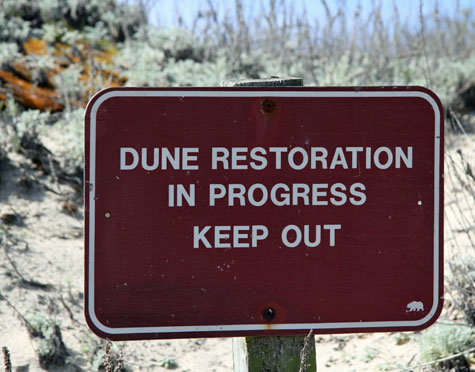 |
| "We abuse land because we regard it as a commodity belonging to us. When we see land as a community to which we belong, we may begin to use it with love and respect. Aldo Leopold. A Sand County Almanac. Oxford University Press, 1949. |
 |
| "It is inconceivable to me that an ethical relation to land can exist without love, respect, and admiration for land, and a high regard for its value. By value, I of course mean something far broader than mere economic value; I mean value in the philosophical sense." Aldo Leopold. A Sand County Almanac. Oxford University Press, 1949. |
| "…I began to see that science was neither the best nor the only valid way to order and name the living world. Instead, I realized that the ordering and naming of life was and always had been, at its heart, something much more democratic, subversive to the dominion of science even, and much more interesting. I eventually came to see that science itself might be undermining the very thing it sought to perfect: humanity's understanding of life. Even more unexpected, I realized that the thoroughly modern, entirely evolutionary new science of taxonomy was actually helping regular folks everywhere to become more and more disconnected from living things - a tragedy that has made it possible for species after species to disappear around the world with hardly anyone noticing or much caring." Carol Kaesuk Yoon. Naming Nature - The Clash Between Instinct and Science. W. W. Norton & Company, Inc. 2009. |
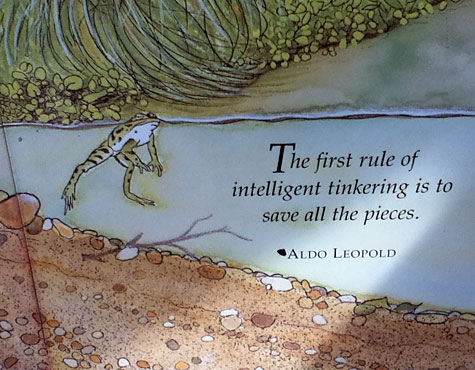 |
| "Recreational development is a job not of building roads into lovely country, but of building receptivity into the still unlovely human mind." Aldo Leopold. A Sand County Almanac. Oxford University Press, 1949. |
| "How many of us, and how often, think of the fact that we live our time on a planet, within that planet's time? What good is it to be alive on Earth and never come to know at least the place where one lives? We don't even try to know it with our senses, much less with our minds and spirits. How many human feet in the industrialized world know anything more than floors, pavement, lawn, or manicured sandy beach in a lifetime? We live on Earth without walking it." David M. Carroll. Following the Water - A Hydromancer's Notebook. Houghton Mifflin Harcourt, 2009. |
 |
All of the sounds of humanity that we easily tune out (called anthropogenic noise - traffic sounds, airplanes overhead, loud music and radios, lawnmowers, motorcycles, leaf blowers, etc. etc.) may be contributing to the decline of frog populations. During the breeding season, frogs simply can't call loud enough and long enough to overcome the noise so fewer of them breed. This abstract from the paper cited below summarizes the findings of a study on frogs and environmental noise in Belize. The emphasis is mine: |
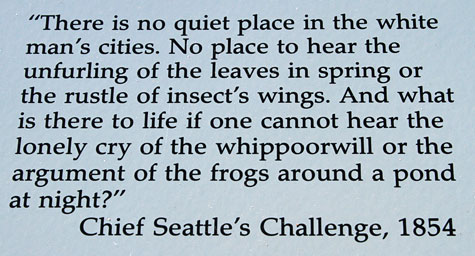 |
| These are very true words that are often attributed to Chief Seattle from his apocryphal speech "Chief Seattle's Challenge, 1854." That speech was actually written by Ted Perry for a 1972 film about ecology titled "Home." (There are no whip-poor-wills in the Pacific Northwest.) |
| "There is talk now of the silence of the frogs, of their striking diebacks, and declines and the disappearance of species globally. Debate is centered on whether these changes are attributable to human alterations of the environment or are a reflection of natural population fluxes. As is commonly the case with such die-offs, the fundamental concern is that there may be a factor involved that will affect people. Perhaps the frogs, like the canary in the coal mine, are signaling some environmental hazard, be it global warming, acid rain, deletion of the ozone layer, hormone-altering of home-mimicking chemicals, some form of pollution that destroys the frogs' immune systems and leaves them fatally vulnerable to a skin fungus, something as yet undetected. In the absence of any clear picture emerging while the debate goes on and research continues, a readily perceptible cause of the silencing of frogs goes essentially unaddressed: the tremendous habitat loss that has come at the hands of the human species. It is a silencing that has taken other voices than those of frogs, as well as voiceless presences, all inevitably vanishing with the disappearance of the places in which they must live." David M. Carroll. Swampwalker's Journal - A Wetlands Year. Houghton Mifflin Company, 1999. |
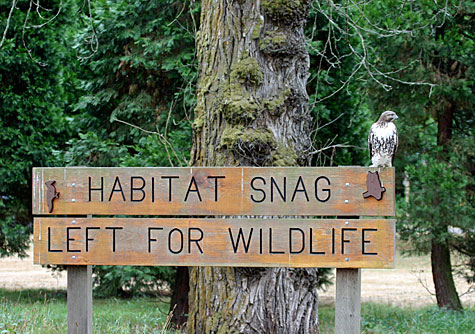 |
| "It's important that frogs and toads stay noisy. The alternative would be unbearable - a silence that would mean the water was gone... or undrinkable." Joseph T. Collins. Forward. Elliott, Lang, Carl Gerhardt, and Carlos Davidson. Frogs and Toads of North America, a Comprehensive Guide to their Identification, Behavior, and Calls. Houghton Mifflin Harcourt, 2009. |
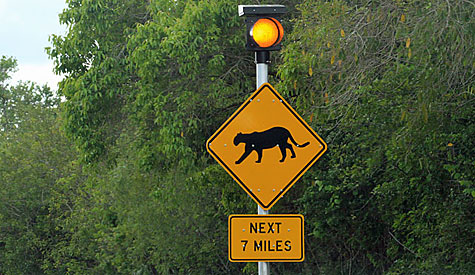 |
| This statement about crows could equally apply to urban and suburban wild herps: "Crows remind us that we make our homes not in a vacuum, but in a zoopolis, a place where human and wild geographies meet and mingle. They press us to our own wilder edges. They may step along our sidewalks, but in the next moment they fly off the path. If we want to watch them well, we will have to leave our own accustomed paths, the cultivated places, the neat edges of our yards and minds. We will find that our lives are not as impoverished as we've been told they are; the sidewalk is not as straight as we thought." Lyanda Lynn Haupt. Crow Planet - Essential Wisdom From the Urban Wilderness. Little, Brown and Company, 2009. |
| "The civilized people have lost the aptitude of stillness, and must take lessons in silence from the wild before they are accepted by it." Isak Dinesen. Out of Africa. 1937 |
"…humanity has initiated the sixth great extinction spasm, rushing to eternity a large fraction of our fellow species in a single generation." ... "A complete recovery from each of the five major extinctions required tens of millions of years. In particular the Ordovician dip needed 25 million years, the Devonian 30 million years, the Permian and Triassic (combined because they were so close together in time) 100 million years, and the Cretaceous 20 million years. These figures should give pause to anyone who believes that what Homo sapiens destroys, Nature will redeem. Maybe so, but not within any length of time that has meaning for contemporary humanity." Edward O. Wilson. The Diversity of Life. The Belknap Press of Harvard University Press. 1992. |
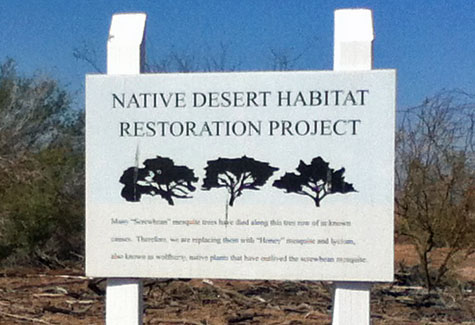 |
"We are in an increasingly tight spot, our quality of life, even our existence, threatened by climate change, pollution, extinctions, wars, starvation, and pestilence. The state of the Earth looks ever more dismal; there are way too many of us consuming way too much, and unless we effect major changes the consequences will be dire for many species, including us. Besides reducing greenhouse gases, connecting habitat patches, and better managing our food, water, and energy consumption, we desperately need to get people into the wild-even if, for some of them, only in ways that are timid by Jack Turner's * standards. In a world of seven billion people, many wretchedly poor and starving, hitching our hopes for nature to exclusionary ideals is dangerously counterproductive. |
 |
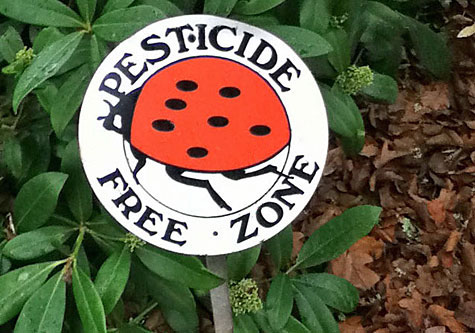 |
| Decades after the publication of "Silent Spring," Rachel Carson's hugely influential 1962 book about the harmful effects of insect-killing pesticides such as DDT on humans and wildlife, bugs are in even greater danger. The biomass of invertebrates has been declining steadily around the world for almost 30 years. Habitat change including urban spread, pesticide use, disease, and climate change are all thought to be a part of the cause. With less food to eat, the biomass of insect-eating herps and birds also plummets. |
| Man is the most insane species. He worships an invisible God and destroys a visible Nature, unaware that this Nature he's destroying is this God he's worshiping. Hubert Reeves |
| " It has been suggested that conservation is one of the most depressing fields in which a biologist can choose to work; a good day in conservation is either bringing back what was lost, or preventing the loss of something not yet lost. While these facts may be true, I disagree that the field is depressing. I believe we are at an inflection point in time. We are at a point in which we have acknowledged the unsustainable mistakes of the past and turned to practices that sustain biodiversity into the future. Because of this unique time, conservation is more exciting than ever. We have the present opportunity to see positive change happening all around. And this change is more than merely “feel good” aesthetic change. It is change rooted in saving what we know to be good, not only for ourselves, but for future generations." Jeff Goessling The Cotton Fields in the Sky, LivingAlongsideWildlife 5/17/17 |
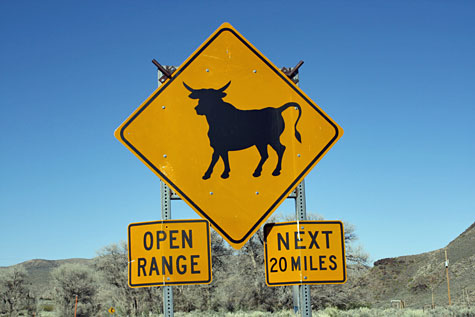 |
| "The rancher strings barbed wire across the range, drills wells and bulldozes stock ponds everywhere, drives off the elk and antelope and bighorn sheep, poisons coyotes and prairie dogs, shoots eagles and bear and cougar on sight, supplants the native bluestem and gramma grass with tumbleweed, cow shit, cheat grass, snakeweed, anthills, poverty weed, mud and dust and flies - and then leans back and smiles broadly at the Tee Vee cameras and tells us how much he loves the West." Edward Abbey A Voice Crying in the Wilderness: Notes from a Secret Journal (Vox Clamantis in Deserto) St. Martins Press, 1990. |
| "During our brief stay on planet Earth, we owe ourselves and our descendants the opportunity to explore---in part because it's fun to do. But there's a far nobler reason. The day our knowledge of the cosmos ceases to expand, we risk regressing to the childish view that the universe figuratively and literally revolves around us. In that bleak world, arms-bearing, resource-hungry people and nations would be prone to act on their 'low contracted prejudices.' And that would be the last gasp of human enlightenment---until the rise of a visionary new culture that could once again embrace, rather than fear, the cosmic perspective." Neil deGrasse Tyson. Astrophysics for People in a Hurry. W.W. Norton & Company, 2017. |
 |
| "...the power of observational experiences to connect us deeply to wild creatures in their natural element cannot be overstated. Leave snakes alone and watch them - you never know what you will see." Taylor, Emily. California Snakes and How to Find Them. Heyday, Berkeley, California. 2024. |
| "Today, amphibians enjoy the dubious distinction of being the world's most endangered class of animals; it's been calculated that the group's extinction rate could be as much as forty-five thousand times higher than the background rate. But extinction rates among many other groups are approaching amphibian levels. It is estimated that one-third of all reef-building corals, a third of all freshwater mollusks, a third of sharks and rays, a quarter of all mammas, a fifth of all reptiles, and a sixth of all birds are headed toward oblivion." Kolbert, Elizabeth. The Sixth Extinction: An Unnatural History. Henry Holt and Company, LLC 2014. |
 |
| "The corollary to leaving old antagonists behind is finding new, naive organisms to take advantage of. A particularly famous--and ghastly--instance of this comes in the long, skinny form of the brown tree snake, Boiga irregularis. ... Guam's fauna was entirely unprepared for Boiga irregularis and its voracious feeding habits. The snake ate its way through most of the island's native birds. ... So thorough has been the devastation wrought by the brown tree snake that it has practically run out of native animals to consume; nowadays it feeds mostly on other interlopers, like the curious skink, a lizard also introduced to Guam from Papua New Guinea. The author David Quammen cautions that while it is easy to demonize the brown tree snake, the animal is not evil; it's just amoral and in the wrong place. What Boiga irregularis has done in Guam, he observes, 'is precisely what Homo sapiens has done all over the planet: succeeded extravagantly at the expense of other species.' " Kolbert, Elizabeth. The Sixth Extinction: An Unnatural History. Henry Holt and Company, LLC 2014. |
| "By transporting Asian species to North America, and North American species to Australia, and Australian species to Africa, and European species to Antarctica, we are, in effect, reassembling the world into one enormous supercontinent--what biologists sometimes refer to as the New Pangaea." Kolbert, Elizabeth. The Sixth Extinction: An Unnatural History. Henry Holt and Company, LLC 2014. |
| "The Center for Invasive Species Research, which is based at the University of California-Riverside, estimates that California is now acquiring a new invasive species every sixty days." Kolbert, Elizabeth. The Sixth Extinction: An Unnatural History. Henry Holt and Company, LLC 2014. |
| "...Eliminating the megafauna didn't just eliminate the megafauna; in Australia at least it set off an ecological cascade that transformed the landscape. Though it might be nice to imagine there once was a time when man lived in harmony with nature, it's not clear that he ever really did." Kolbert, Elizabeth. The Sixth Extinction: An Unnatural History. Henry Holt and Company, LLC 2014. |
 |
| Sources |
| Abbey, Edward. Desert Solitaire. 1967. Abbey, Edward. A Voice Crying in the Wilderness: Notes from a Secret Journal (Vox Clamantis in Deserto) St. Martins Press, 1990. Anthony, Leslie. Snakebit: Confessions of a Herpetologist. Greystone Books, 2008. Bartlett, R. D., and Patricia P. Bartlett. Guide and Reference to the Amphibians of Western North America (North of Mexico) and Hawaii. University Press of Florida, 2009. Burdick, Alan . Out of Eden: An Odyssey of Ecological Invasion. Farrar, Straus and Giroux, 2006. Carroll, David M. Swampwalker's Journal - A Wetlands Year. Houghton Mifflin Company, 1999. Carroll, David M. Following the Water - A Hydromancer's Notebook. Houghton Mifflin Harcourt, 2009. Carson, Rachel. Silent Spring. 1962. Collins, Joseph T. Forward. Elliott, Lang, Carl Gerhardt, and Carlos Davidson. Frogs and Toads of North America, a Comprehensive Guide to their Identification, Behavior, and Calls. Houghton Mifflin Harcourt, 2009. Conant, Roger and Joseph Collins. A Field Guide to Reptiles and Amphibians, Eastern and Central North America. Houghton Mifflin Company, 1998. Dillard, Annie. Pilgrim at Tinker Creek. Harper & Row, Publishers. 1974. Dinesen, Isak. Out of Africa. 1937. Dixon, James R., and John E. Werler. Texas Snakes, A Field Guide. University of Texas Press, 2005. Elliott, Lang, Carl Gerhardt, and Carlos Davidson. Frogs and Toads of North America, a Comprehensive Guide to their Identification, Behavior, and Calls. Houghton Mifflin Harcourt, 2009. Ernst, Carl H., Roger W. Barbour, and Jeffrey E. Lovich. Turtles of the United States and Canada. Smithsonian Institution Press, 1994. Greene, Harry W. Snakes -The Evolution of Mystery in Nature. University of California Press, 1997. Greene, Harry W. Tracks and Shadows - Field Biology As Art. University of California Press, 2013. Grismer, L. Lee. Amphibians and Reptiles of Baja California. University of California Press, 2002. Haupt, Lyanda Lynn. Crow Planet - Essential Wisdom From the Urban Wilderness. Little, Brown and Company, 2009. Jones, Lawrence, and Rob Lovich, editors. Lizards of the American Southwest: A Photographic Field Guide. Rio Nuevo Publishers, 2009. Yoon, Carol Kaesuk. Naming Nature - The Clash Between Instinct and Science. W. W. Norton & Company, Inc. 2009 . Kaiser, K., DG Scofield, M. Alloush, RM Jones, .S Marczak, .K Martineau & MA Oliva (2011) When sounds collide: the effect of anthropogenic noise on a breeding assemblage of frogs in Belize, Central America. Behaviour 14: 215-232. Kolbert, Elizabeth - The Sixth Extinction: An Unnatural History. Henry Holt and Company, LLC 2014. Lannoo, Michael J. (Editor). Forward to: Amphibian Declines: The Conservation Status of United States Species. University of California Press, June 2005. Lannoo, Michael J. Okoboji Wetlands - A Lesson in Natural History. University of Iowa Press, 1996. Leopold, Aldo. A Sand County Almanac. Oxford University Press, 1949. Living Alongside Wildlife McAllister, Kelly R., and Lawrence L. C. Jones. Laws and Conservation chapter: Jones, Lawrence L. C., William P. Leonard, Deanna H. Olson, editors. Amphibians of the Northwest 2005. Petranka, James W. Salamanders of the United States and Canada. Smithsonian Institution Press, 1998. Pianka, Eric R., Laurie J. Vitt. Lizards: Windows to the Evolution of Diversity (Organisms and Environments, 5.) University of California Press, 2003. Raven, Peter H. Foreward - Life on the Edge. A Guide to California's Endangered Natural Resources: Wildlife. BioSystem Books 1994. Reaser, Jamie K. and Andrew Blausetin. Amphibian Declines: The Conservation Status of United States Species, Chapter Eleven: Repurcussions of Global Change. University of California Press, June 2005. Stebbins, Robert C. Amphibians and Reptiles of Western North America, 1954. Stebbins, Robert C. California Amphibians and Reptiles. The University of California Press, 1972. Stebbins, Robert C. A Field Guide to Western Reptiles and Amphibians, Second Edition. Houghton Mifflin Company, 1985. Taylor, Emily. California Snakes and How to Find Them. Heyday, Berkeley, California. 2024. Tyson, Neil deGrasse. Astrophysics for People in a Hurry. W.W. Norton & Company, 2017. Wilson, Anthony B. Amphibian Declines: The Conservation Status of United States Species, Chapter 22: Commercial Trade. University of California Press, June 2005. Wilson, Edward O. The Future of Life. Alfred A. Knopf, 2002. Wilson, Edward O. The Diversity of Life. The Belknap Press of Harvard University Press. 1992. |
Return to the Top
© 2000 -
